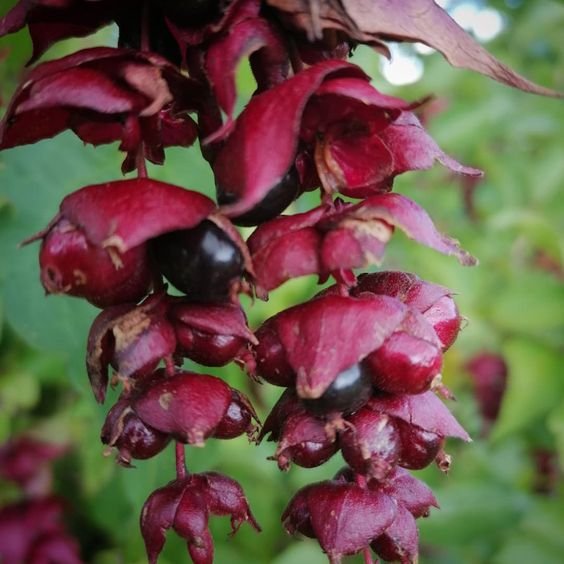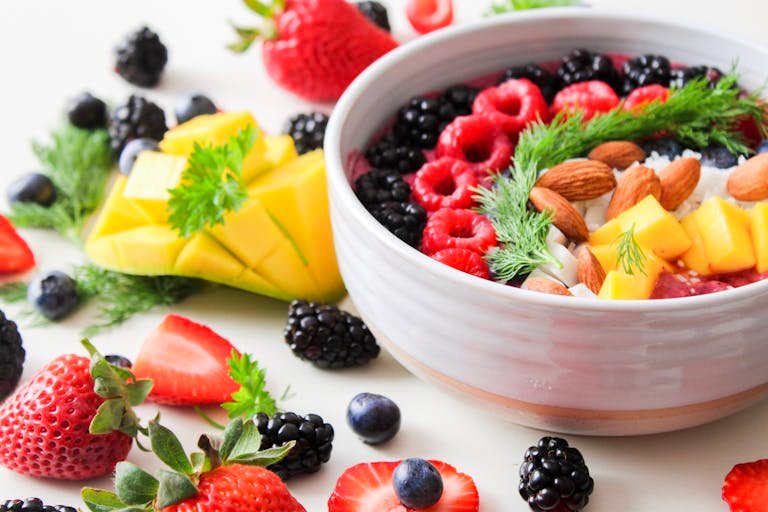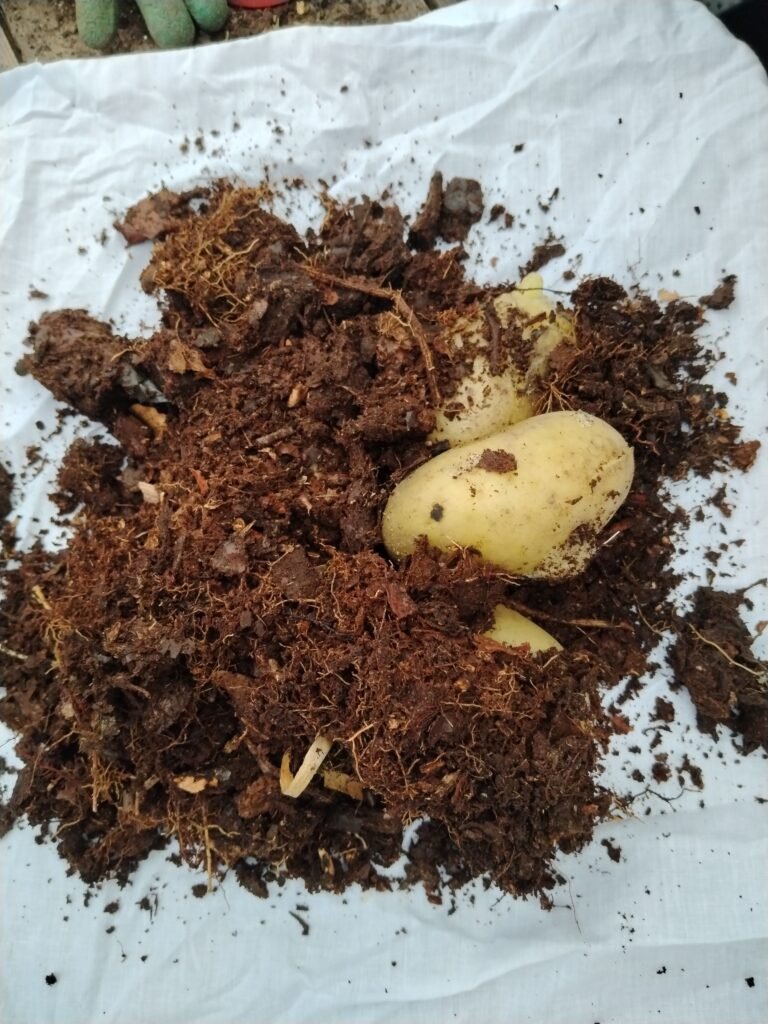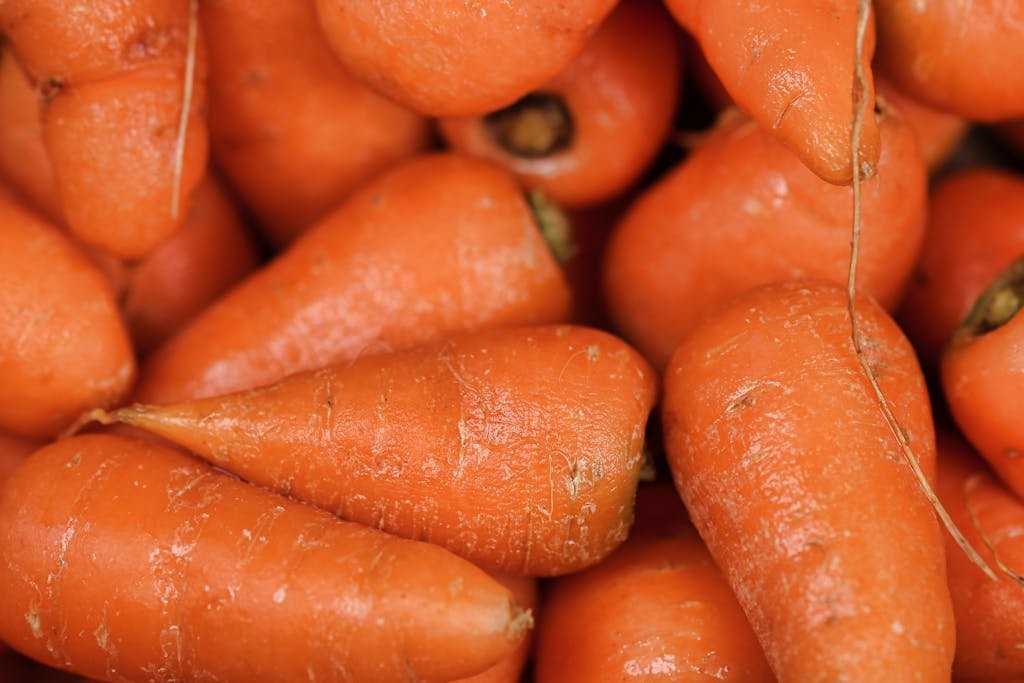
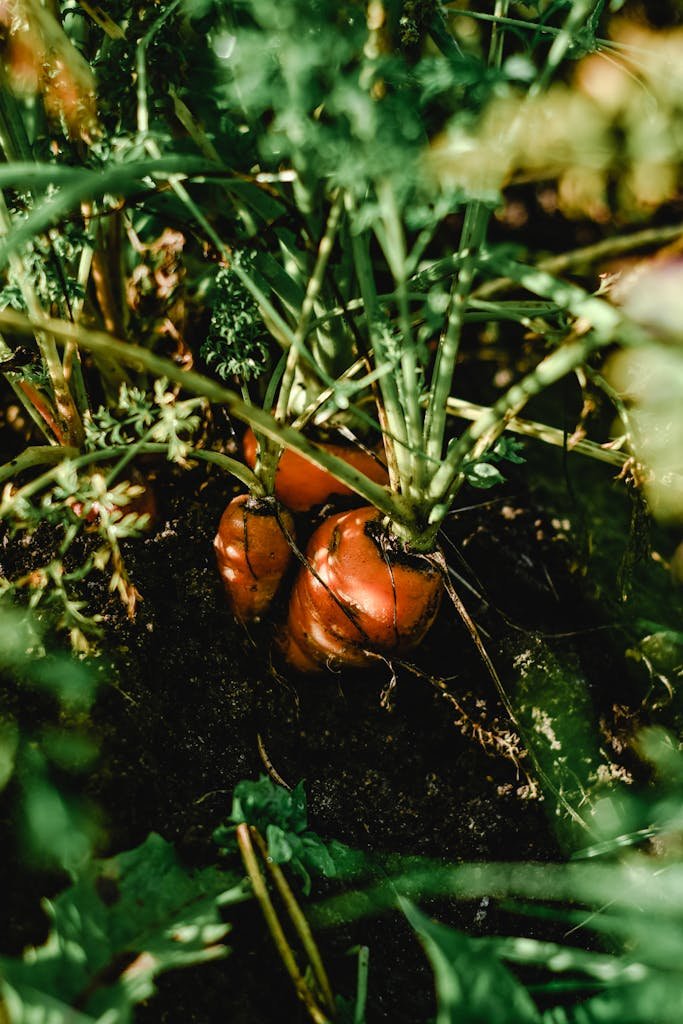
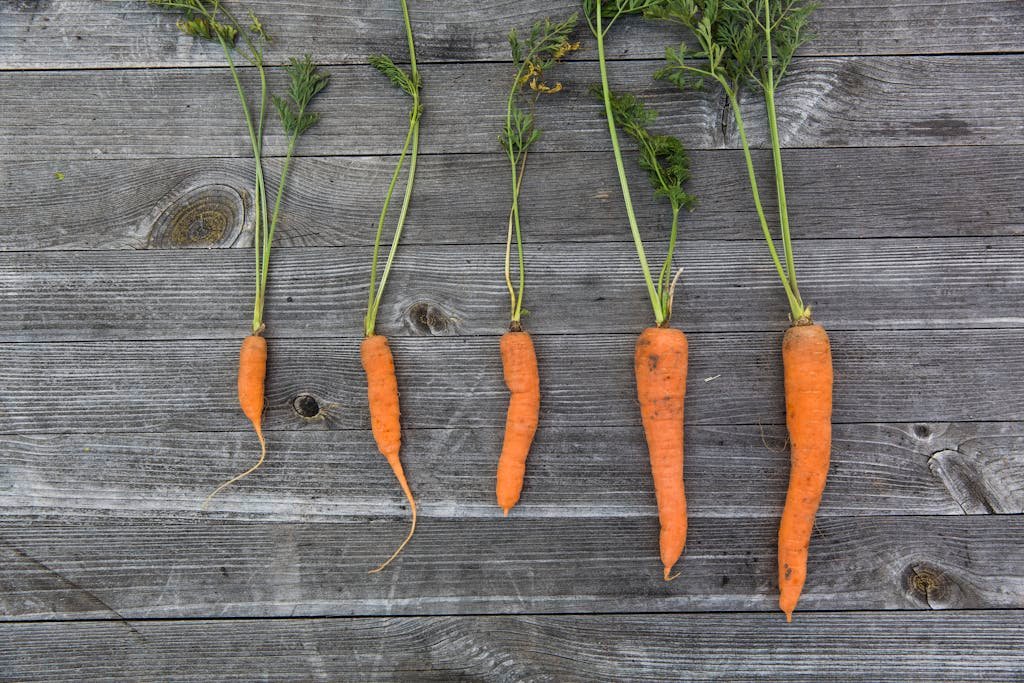
When it comes to lunchbox favorites, carrots come in right behind apples as the top snack kids love to crunch. And we totally get why. They’re sweet, crisp, and fun to munch—plus, they come in bright colors that make snack time a little more magical. If you’re wondering how to grow carrots organically, you’re in the right place.
We’ve been growing carrots for years now, and let me tell you—nothing beats pulling up those cheerful roots from the soil, brushing them off, and watching a child take a bite right there in the garden. Whether you’re growing on a windowsill or digging deep in your raised beds, carrots are one of the most rewarding crops to grow.
In this guide, I’ll walk you through every step, from picking the right seeds to knowing when to harvest. You’ll learn how to make the soil loose and lovely, how to keep pests away without chemicals, and how to grow crunchy carrots your family will actually want to eat.
So grab a mug of tea, pull up your gardening gloves, and let’s get to the good part—growing sweet, organic carrots that are lunchbox-ready and full of goodness.
Choosing the Right Carrot Varieties for Your Garden
Overview of Carrot Types: Nantes, Chantenay, Danvers, Imperator, and Mini
Not all carrots are created equal! Each type has its own shape, flavor, and way of growing. Here’s a quick guide to help you pick the perfect one for your garden:
- Nantes – Short, sweet, and blunt-tipped. These are great for snacking and super easy for beginners to grow.
- Chantenay – Short and stout with a crisp, sweet flavor. Perfect for heavier or rocky soil.
- Danvers – Classic carrot shape, slightly tapered. Great for juicing, roasting, and general use.
- Imperator – Long and slender. These need deep, loose soil and are often what you see in grocery stores.
- Mini Carrots – Tiny, fast-growing, and adorable. Ideal for containers, raised beds, or little hands eager to harvest!
Best Varieties for Beginners and Containers
If you’re just getting started or growing in pots, go for the easier types. Thumbelina and Paris Market are both mini carrots that grow well in shallow containers. Little Finger is another favorite that’s quick to mature and doesn’t need perfect soil. These varieties are not only beginner-friendly but also great for anyone with limited space.
Organic vs. Hybrid Seed Pros and Cons
Here’s something to keep in mind—organic seeds are untreated and grown without chemicals, which fits right in with natural gardening. They’re great for building a healthy garden from the soil up. On the other hand, hybrid seeds are often bred for uniform size and disease resistance. They might grow a bit more predictably but aren’t always open-pollinated, so you can’t save seeds for next year. If you’re aiming for sustainability, organic or heirloom varieties are the way to go.
Where to Buy Quality Carrot Seeds
Now, where do you find good seeds? You can check your local garden center or nursery for region-friendly varieties. Online heirloom stores like Seed Savers Exchange or Baker Creek are great for unique types. If you want convenience, Amazon also has a decent selection—but make sure to read the reviews and choose certified organic or heirloom packs when you can. A little research now means a tastier harvest later!
When and Where to Plant Carrots
Carrots love cooler weather, which makes them perfect for both spring and fall. In temperate climates, sow your seeds in early spring as soon as the soil can be worked, or in late summer for a lovely autumn harvest. If you live in a milder climate, like the west of Ireland or parts of the southern U.S., you might even be able to grow them almost year-round. Just avoid planting during the peak of summer when the heat gets too strong.
Understanding Carrot Frost Tolerance and Temperature Ranges
Don’t worry too much about chilly nights—carrots are quite frost-hardy. In fact, a touch of frost often makes them taste even sweeter! The best soil temperature for sprouting is between 7°C to 24°C (45°F to 75°F). Below that, seeds will sleep in the soil a bit longer, but they’ll wake up when things warm up.
Indoor Sowing vs. Direct Seeding Outdoors
Carrots are not fans of being moved, so it’s best to sow seeds directly in the soil where you want them to grow. That means no indoor starts or transplanting—just pick your spot and tuck them in gently.
Sunlight and Spacing Needs
Carrots love the sun and need at least 6 hours of sunlight each day. When sowing, keep seeds 2 to 3 cm (1 inch) apart, with about 30 cm (12 inches) between rows. Giving them enough room helps them grow straight and strong.
Containers and Alternative Growing Spaces
Don’t have a garden bed? No worries! Carrots grow beautifully in deep containers, raised beds, fabric grow bags, and even upcycled household items like bins or washing baskets. The key is depth—carrots need room to stretch down. And depending on the variety you grow, you can choose containers that suit just right.
- Short Carrots (like Nantes or Chantenay): These are perfect for containers that are 20–25 cm (8–10 inches) deep. Try growing them in:
- Medium-Length Carrots (like Danvers): These need around 30–35 cm (12–14 inches) of depth. A standard bin works well here!
- Long Carrots (like Imperator): These need a deep 40–45 cm (16–18 inches) space to avoid curling or stunting. Try:
Make sure to fill containers with loose, stone-free soil to give your carrots the best chance to grow long and straight.
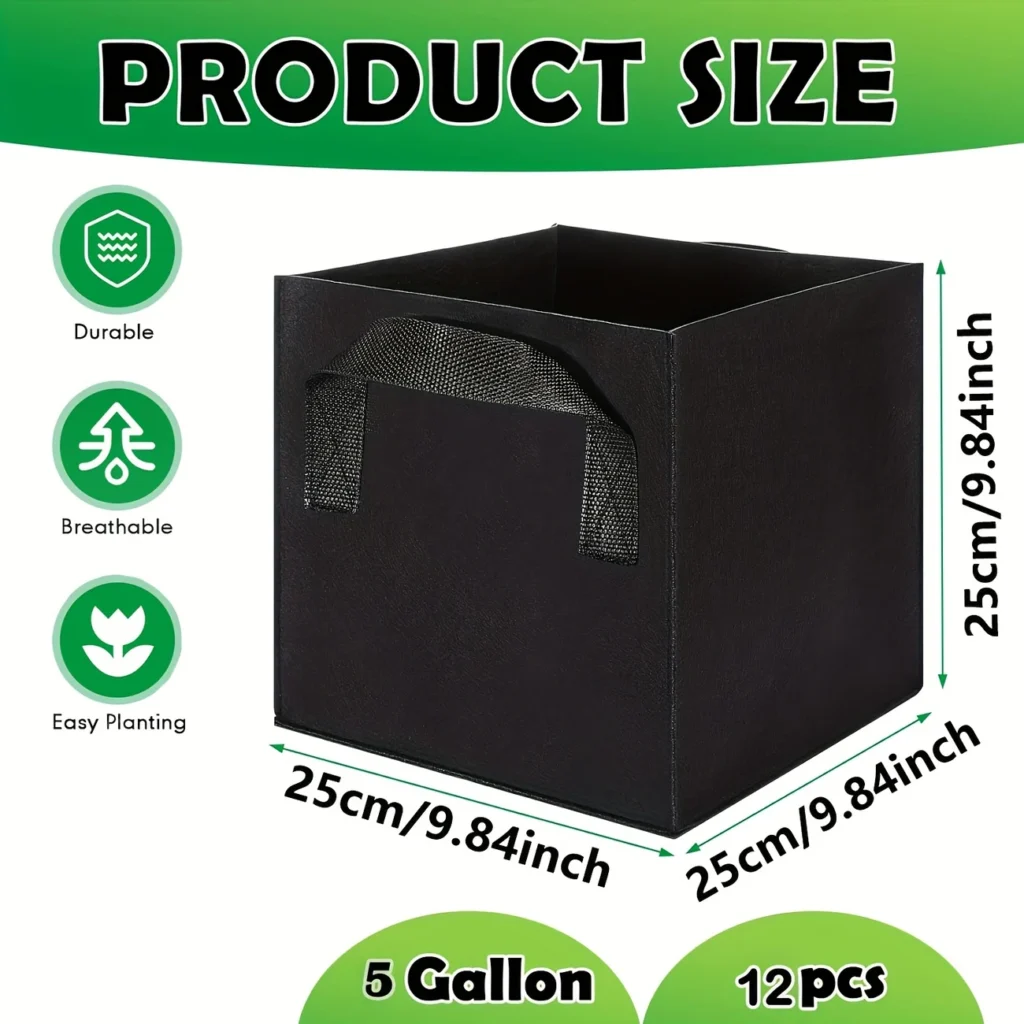
Preparing the Soil for Perfect Carrots
Before you plant a single seed, let’s talk about soil. Carrots grow best in loose, sandy soil that drains well and lets their roots stretch straight down without a fight. Ideally, you want a mix of sand, a bit of silt, and a touch of clay to help hold moisture. Even better, aim for a pH level between 6.0 and 6.8—that’s slightly acidic, and carrots thrive in it.
Why Loose, Sandy Soil Is Essential
First of all, carrots hate hard soil. If your ground is too packed, full of rocks, or clay-heavy, the roots will twist and split instead of growing long and smooth. That’s why loose, crumbly soil is key—it gives carrots the wiggle room they need to grow strong and sweet.
How to Amend Heavy Clay Soil
But what if you’re dealing with stubborn clay? No problem. Simply mix in some coarse sand, aged compost, or even peat-free potting mix to lighten things up. Over time, this turns heavy clay into soft, workable soil that carrots will actually enjoy.
Using Compost and Avoiding Nitrogen Overload
Next, let’s talk compost. While compost is fantastic, too much nitrogen—like what you find in fresh manure or “hot” compost—can lead to lots of leafy green tops and tiny, disappointing roots. Instead, go for well-aged compost that enriches the soil slowly without overwhelming your plants.
Raised Beds and Deep Container Tips
Lastly, if your garden soil just won’t cooperate, raised beds or deep containers can be a great solution. Just be sure they’re 12 to 18 inches deep, filled with a light, airy mix. This way, even in tricky spots, you’ll still get straight, crunchy carrots. Plus, containers are perfect for balconies, patios, or small gardens—just one more reason to give it a try!
How to Sow Carrot Seeds Correctly
Sowing carrots might seem tricky, but with a few simple tips, you’ll be on your way to a crunchy harvest in no time. Let’s walk through the steps from seed to sprout!
Direct Sowing: Depth, Spacing, and Thinning
First, carrots don’t like to be moved, so always sow them directly into your garden or container. Make shallow rows about ¼ inch (0.5 cm) deep and space seeds about 1 inch (2.5 cm) apart. After they sprout, gently thin the seedlings so each carrot has about 2 inches (5 cm) of space to grow. It’s hard to pull baby plants, but it really helps the rest grow strong and straight.
Germination Time and How to Speed It Up
Next, don’t worry if they don’t pop up right away. Carrot seeds can take 7 to 21 days to germinate, depending on the weather. To help them along, soak the seeds overnight before planting or cover the rows with a damp board or burlap to hold moisture until they sprout. Just remember to check daily so you don’t miss their tiny green heads!
Watering Tips for Young Carrot Seedlings
Once they sprout, keep the soil moist but not soggy. Carrots have fine roots that dry out fast, especially when young. Water lightly every day or two, and try not to let the soil form a crust on top—that can block new sprouts.
Companion Planting Ideas
Carrots grow best with a few good friends by their side. Here are five top companions that help them thrive:
- Onions – Their strong smell helps repel carrot flies, which are a common pest for young carrots.
- Radishes – These fast growers loosen the soil as they develop, making it easier for carrots to grow straight and strong. Plus, they sprout quickly, so you can see your row before the carrots appear!
- Leeks – Similar to onions, leeks are great at confusing carrot pests with their scent. They also enjoy the same soil and watering needs.
- Lettuce – With shallow roots and a short growing season, lettuce provides shade to keep carrot roots cool, especially during warm spells.
- Marigolds – These cheerful flowers help deter nematodes and aphids, and they attract beneficial insects that protect your carrots.
Watering, Feeding, and Mulching for Healthy Growth
Carrots might not be picky eaters, but they do love a little routine and care. To grow sweet and crunchy roots, you’ll want to give them just the right amount of water, food, and a cozy blanket of mulch.
Ideal Watering Schedule by Week
To start, carrots need about 1 inch (2.5 cm) of water each week. In the first few weeks after sowing, keep the soil gently moist—not soaked—so the seeds can sprout. As they grow, water deeply once or twice a week, depending on rainfall and temperature. Deep watering helps the roots grow straight and strong.
Signs of Overwatering or Under-Watering
Now, here’s what to watch for. If your carrot tops look yellow or floppy, you might be overwatering. If they start to wilt or look dull and dry, they probably need more water. Carrots like consistency, so try not to let the soil dry out completely between waterings.
When and How to Feed Carrots (And When Not To!)
Carrots don’t like too much fertilizer—especially not the nitrogen-heavy kind, which can give you lots of leaves but stubby roots. Instead, mix in a bit of well-rotted compost before planting, and that’s usually enough. If your soil is poor, a light feeding of balanced organic fertilizer once the tops are a few inches tall will do.
Mulching Tips to Retain Moisture and Suppress Weeds
Finally, mulch is your secret weapon. A soft layer of straw, shredded leaves, or grass clippings helps keep moisture in, keeps weeds out, and keeps your carrots cool. Just wait until the seedlings are a few inches tall before mulching, so they don’t get smothered.
Common Carrot Growing Problems (and How to Fix Them)
Even with the best care, carrots can sometimes give us trouble. But don’t worry—most problems have simple fixes once you know what to look for.
Forked or Twisted Carrots: Causes and Prevention
Carrots grow best in loose, rock-free soil. If they hit a stone or a clump of clay, they’ll split or twist around it. Using a sandy soil mix and removing any big bits before planting helps. Also, don’t transplant carrots—they really don’t like being moved once they start growing.
Pest Problems: Carrot Flies, Aphids, and Slugs
Carrot flies lay eggs near the soil, and their larvae munch on your roots. To stop them, plant carrots alongside strong-smelling friends like onions and garlic. Aphids love to suck on carrot tops, but a good spray of water or a mix of soapy water can chase them off. Slugs? Try crushed eggshells or copper tape around the bed.
Disease Issues: Leaf Blight, Damping Off, and Root Rot
Wet leaves and soggy soil can lead to disease. Leaf blight shows up as brown spots and weak growth. Damping off affects baby seedlings, making them flop over. And root rot happens when the soil stays too wet. Water only when needed and make sure your soil drains well.
Natural Pest Control and Crop Rotation Tips
For a healthy garden, rotate where you plant carrots each year. This helps stop pests and diseases from hanging around. Adding herbs like dill or chamomile nearby can also keep pests in check—plus, they attract helpful bugs like ladybugs!
Harvesting and Storing Carrots the Right Way
After weeks of waiting, it’s finally time to pull those carrots! But before you start digging, let’s make sure you know when and how to do it right—so you don’t break your beautiful roots or lose their sweet flavor.
How to Tell When Carrots Are Ready to Harvest
Carrots are usually ready about 60–80 days after planting, depending on the variety. A good sign they’re ready is when the tops of the carrots start to peek out of the soil. Gently brush the dirt away and check their width. If they look about the right size, it’s go time! You can also pull one test carrot to check for flavor and size.
Best Tools and Techniques for Gentle Harvesting
Carrots don’t like to be yanked. Instead, loosen the soil first with a hand fork or trowel. This helps avoid breaking the roots. For tighter beds or deeper varieties, a long, slim garden fork works wonders. (💡 This is a great spot for affiliate links to a hand fork, trowel, or root harvester from Amazon or VEVOR!) Don’t forget gloves if the soil is cold or wet.
Tips for Sweetening Carrots Before Harvest
Did you know a light frost can make your carrots sweeter? That’s right! Cold weather turns their starches into sugars. So if you can, leave them in the ground until after the first frost for an extra tasty crunch.
Storing Carrots: In-Ground, Fridge, Root Cellar, or Sand
If you’re not eating them all at once, there are a few good ways to store your harvest. You can leave them in the ground with a thick layer of straw over the top. Or, for indoor storage, twist off the leafy tops and keep them in the fridge in a bag with a bit of moisture. For long-term keeping, layer unwashed carrots in boxes of damp sand and store them in a cool, dark place like a root cellar or shed.
Conclusion: From Seed to Snack—Carrots Made Easy
And there you have it—everything you need to grow your own sweet, crunchy carrots from seed to harvest. Whether you’re tucking them into a deep bed or planting in a laundry basket on your porch, carrots are one of the most rewarding crops for any gardener. They’re simple, colorful, and loved by little hands and big ones alike.
But remember, growing great carrots takes a little patience. From picking the right variety to watering just enough, each step adds up to a harvest you can be proud of. And even if a few come out crooked or tiny, that’s okay! Nature loves a bit of character—and so do we.
Now that your garden is full of carrots, don’t forget to enjoy them in all kinds of ways. Of course, they’re great raw in lunchboxes or roasted with herbs. But if you’re feeling adventurous, why not try something new? We love using fresh carrots in cozy recipes like our homemade dolmas, where grated carrots add a gentle sweetness to the rice filling. It’s a perfect dish for using up garden veggies!
So keep planting, keep learning, and most of all—enjoy the process. Your garden doesn’t have to be perfect to be wonderful. With each season, your skills (and your carrots!) will grow. Happy gardening, friend.


